MaryAnn Bernal's Blog, page 267
June 20, 2014
Ancient Skulls Reveal 'Mixed' Neanderthal-Like Lineage
By Charles Q. Choi
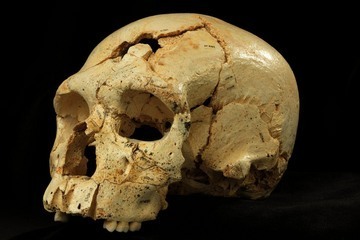
 A hominin skull (dubbed Skull 17) from the Sima de los Huesos cave site in Sierra de Atapuerca, Spain.
A hominin skull (dubbed Skull 17) from the Sima de los Huesos cave site in Sierra de Atapuerca, Spain.
Credit: © Javier Trueba / Madrid Scientific Films
A key first step in Neanderthal evolution may have been the development of front teeth that could act like a "third hand," researchers now say.
These new findings are based on 17 hominin skulls showing a mix of traits from Neanderthals and more primitive human lineages, dating back some 430,000 years. The specimens likely belonged to a hominin group within the Neanderthal lineage but perhaps not direct Neanderthal ancestors. (Hominins include modern humans and extinct ancestors and close relatives of the human lineage.)
The mix of traits suggests the defining features of the Neanderthal body may have evolved separately in stages instead of evolving together gradually, scientists added.
These findings also reveal that, evolutionarily speaking, "Neanderthals have very deep roots, as deep as 430,000 years," lead study author Juan-Luis Arsuaga, a paleontologist at and director of the Joint Center for Evolution and Human Behavior in Madrid, told Live Science. "Modern humans, on the contrary, have roots only 200,000 years deep. It seems that modern humans evolved later." [See Photos of the Hominin Fossils and Spanish Cave Site]
Stocky Neanderthals
Modern humans, Homo sapiens, are the only living members of the human lineage, Homo. Scientists think that lineage arose in Africa about 2 million years ago, relatively soon after the beginning of the ice age, also known as the Pleistocene Epoch. The closest-known extinct relatives of modern humans were the Neanderthals, who lived in Europe and Asia until they disappeared about 40,000 years ago.
About 400,000 to 500,000 years ago, in the heart of the Pleistocene, archaic humans split off from other groups living during that period in Africa and East Asia; these archaic humans settled in Eurasia, where they evolved characteristics that would come to define the Neanderthal lineage. Later, between about 100,000 to 200,000 years ago, modern humans evolved in Africa.
Neanderthals were generally shorter and stockier than modern humans, built like weightlifters or wrestlers. Neanderthal skulls also famously had large brows and jaws, as well as big noses and sloping foreheads and chins. They also usually had larger brains than modern humans, with long, flat brainpans.
Still, Neanderthals remained closely related enough with modern humans for the two to interbreed — in fact, about 1.5 to 2.1 percent of the DNA of any modern human outside Africa is Neanderthal in origin. Recent findings revealed that Neanderthals interbred with ancestors of modern humans when modern humans began spreading out of Africa perhaps about 40,000 to 80,000 years ago. However, some research suggests the migration began earlier.
How to make a Neanderthal
It has remained uncertain why the physical form of Neanderthals diverged so much from that of other human groups over a relatively short amount of time.
"For decades, the nature of the evolutionary process that gave rise to Neanderthals has been discussed," study co-author Ignacio Martinez at the University of Alcalá in Spain said in a statement. "An important question in these debates was whether the 'Neanderthalization process' involved all regions of the skull from the beginning, or if, on the contrary, there were various stages in this process that affected different parts of the skull at different times."
To help solve the mystery of how Neanderthals evolved, scientists analyzed fossils unearthed from the Sima de los Huesosor "Pit of Bones," an underground cave in the Atapuerca Mountains in northern Spain. The pit lies about 100 feet (30 meters) below the surface, at the bottom of a 42-foot (13 m) vertical shaft. Researchers suggest the bones there may have been washed into the cave by rain or floods, or possibly even intentionally buried there. [See Photos of Other Fossils Found in Sima de los Huesos Cave]
Researchers first discovered human fossils in the cave in 1976, and have continuously excavated at the site since 1984. "After 30 years, we have recovered nearly 7,000 human fossils corresponding to all skeletal regions of at least 28 individuals," Martinez said in a statement. "This extraordinary collection includes 17 fragmentary skulls, many of which are very complete."
The Sima fossils could provide a key snapshot of what the skulls of archaic humans in Europe were like during the early stages of the Neanderthal lineage.
"The finding of 17 generally very complete skulls is in itself one of the greatest discoveries in paleoanthropology ever," Arsuaga said.
Skulls with mixed traits
These ancient skulls displayed a mix of Neanderthal and more primitive traits. This "mosaic pattern" of traits seen in the Sima fossils suggests Neanderthals evolved their defining features in stages at different times, not with gradual, steady changes happening together over the entire skull.
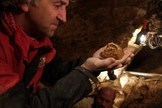
[image error] Lead study author Juan-Luis Arsuaga, professor of paleontology at the Complutense University of Madrid, looks at a hominin specimen at the Spanish cave site Sima de los Huesos.
Lead study author Juan-Luis Arsuaga, professor of paleontology at the Complutense University of Madrid, looks at a hominin specimen at the Spanish cave site Sima de los Huesos.
Credit: © Javier Trueba / Madrid Scientific Films
View full size imageSpecifically, the Sima fossils possessed Neanderthal teeth, jaw and facial features. In contrast, the nearby braincase still displayed features associated with more-primitive ancient humans. This work suggests facial changes were the first step in Neanderthal evolution.
Critically, many of the Neanderthal-like features in the Sima fossils were related to chewing. "It seems these modifications had to do with an intensive use of the frontal teeth," Arsuaga said in a statement. "The incisors show a great wear, as if they had been used as a 'third hand,' typical of Neanderthals."
All in all, the physical features of the Sima fossils suggest these hominins were part of the Neanderthal lineage, "although not necessarily direct ancestors to the classic Neanderthals," Arsuaga said in a statement. Indeed, other ancient humans in Europe from the Middle Pleistocene do not exhibit the suite of Neanderthal-like features seen in the Sima fossils, suggesting more than one evolutionary lineage appears to have coexisted on that continent at the time.
Extreme variations in climate during the Pleistocene may explain why the physical form of the Neanderthal lineage diverged so quickly from that of other human groups. Those environmental changes led to glaciers and other barriers that separated human groups from each other, and this isolation may have driven the groups to genetically diverge, the scientists noted.
http://www.livescience.com/46415-hominin-skulls-reveal-neanderthal-evolution.html

 A hominin skull (dubbed Skull 17) from the Sima de los Huesos cave site in Sierra de Atapuerca, Spain.
A hominin skull (dubbed Skull 17) from the Sima de los Huesos cave site in Sierra de Atapuerca, Spain.Credit: © Javier Trueba / Madrid Scientific Films
A key first step in Neanderthal evolution may have been the development of front teeth that could act like a "third hand," researchers now say.
These new findings are based on 17 hominin skulls showing a mix of traits from Neanderthals and more primitive human lineages, dating back some 430,000 years. The specimens likely belonged to a hominin group within the Neanderthal lineage but perhaps not direct Neanderthal ancestors. (Hominins include modern humans and extinct ancestors and close relatives of the human lineage.)
The mix of traits suggests the defining features of the Neanderthal body may have evolved separately in stages instead of evolving together gradually, scientists added.
These findings also reveal that, evolutionarily speaking, "Neanderthals have very deep roots, as deep as 430,000 years," lead study author Juan-Luis Arsuaga, a paleontologist at and director of the Joint Center for Evolution and Human Behavior in Madrid, told Live Science. "Modern humans, on the contrary, have roots only 200,000 years deep. It seems that modern humans evolved later." [See Photos of the Hominin Fossils and Spanish Cave Site]
Stocky Neanderthals
Modern humans, Homo sapiens, are the only living members of the human lineage, Homo. Scientists think that lineage arose in Africa about 2 million years ago, relatively soon after the beginning of the ice age, also known as the Pleistocene Epoch. The closest-known extinct relatives of modern humans were the Neanderthals, who lived in Europe and Asia until they disappeared about 40,000 years ago.
About 400,000 to 500,000 years ago, in the heart of the Pleistocene, archaic humans split off from other groups living during that period in Africa and East Asia; these archaic humans settled in Eurasia, where they evolved characteristics that would come to define the Neanderthal lineage. Later, between about 100,000 to 200,000 years ago, modern humans evolved in Africa.
Neanderthals were generally shorter and stockier than modern humans, built like weightlifters or wrestlers. Neanderthal skulls also famously had large brows and jaws, as well as big noses and sloping foreheads and chins. They also usually had larger brains than modern humans, with long, flat brainpans.
Still, Neanderthals remained closely related enough with modern humans for the two to interbreed — in fact, about 1.5 to 2.1 percent of the DNA of any modern human outside Africa is Neanderthal in origin. Recent findings revealed that Neanderthals interbred with ancestors of modern humans when modern humans began spreading out of Africa perhaps about 40,000 to 80,000 years ago. However, some research suggests the migration began earlier.
How to make a Neanderthal
It has remained uncertain why the physical form of Neanderthals diverged so much from that of other human groups over a relatively short amount of time.
"For decades, the nature of the evolutionary process that gave rise to Neanderthals has been discussed," study co-author Ignacio Martinez at the University of Alcalá in Spain said in a statement. "An important question in these debates was whether the 'Neanderthalization process' involved all regions of the skull from the beginning, or if, on the contrary, there were various stages in this process that affected different parts of the skull at different times."
To help solve the mystery of how Neanderthals evolved, scientists analyzed fossils unearthed from the Sima de los Huesosor "Pit of Bones," an underground cave in the Atapuerca Mountains in northern Spain. The pit lies about 100 feet (30 meters) below the surface, at the bottom of a 42-foot (13 m) vertical shaft. Researchers suggest the bones there may have been washed into the cave by rain or floods, or possibly even intentionally buried there. [See Photos of Other Fossils Found in Sima de los Huesos Cave]
Researchers first discovered human fossils in the cave in 1976, and have continuously excavated at the site since 1984. "After 30 years, we have recovered nearly 7,000 human fossils corresponding to all skeletal regions of at least 28 individuals," Martinez said in a statement. "This extraordinary collection includes 17 fragmentary skulls, many of which are very complete."
The Sima fossils could provide a key snapshot of what the skulls of archaic humans in Europe were like during the early stages of the Neanderthal lineage.
"The finding of 17 generally very complete skulls is in itself one of the greatest discoveries in paleoanthropology ever," Arsuaga said.
Skulls with mixed traits
These ancient skulls displayed a mix of Neanderthal and more primitive traits. This "mosaic pattern" of traits seen in the Sima fossils suggests Neanderthals evolved their defining features in stages at different times, not with gradual, steady changes happening together over the entire skull.

[image error]
 Lead study author Juan-Luis Arsuaga, professor of paleontology at the Complutense University of Madrid, looks at a hominin specimen at the Spanish cave site Sima de los Huesos.
Lead study author Juan-Luis Arsuaga, professor of paleontology at the Complutense University of Madrid, looks at a hominin specimen at the Spanish cave site Sima de los Huesos.Credit: © Javier Trueba / Madrid Scientific Films
View full size imageSpecifically, the Sima fossils possessed Neanderthal teeth, jaw and facial features. In contrast, the nearby braincase still displayed features associated with more-primitive ancient humans. This work suggests facial changes were the first step in Neanderthal evolution.
Critically, many of the Neanderthal-like features in the Sima fossils were related to chewing. "It seems these modifications had to do with an intensive use of the frontal teeth," Arsuaga said in a statement. "The incisors show a great wear, as if they had been used as a 'third hand,' typical of Neanderthals."
All in all, the physical features of the Sima fossils suggest these hominins were part of the Neanderthal lineage, "although not necessarily direct ancestors to the classic Neanderthals," Arsuaga said in a statement. Indeed, other ancient humans in Europe from the Middle Pleistocene do not exhibit the suite of Neanderthal-like features seen in the Sima fossils, suggesting more than one evolutionary lineage appears to have coexisted on that continent at the time.
Extreme variations in climate during the Pleistocene may explain why the physical form of the Neanderthal lineage diverged so quickly from that of other human groups. Those environmental changes led to glaciers and other barriers that separated human groups from each other, and this isolation may have driven the groups to genetically diverge, the scientists noted.
http://www.livescience.com/46415-hominin-skulls-reveal-neanderthal-evolution.html

Published on June 20, 2014 10:48
Old Money: Rare Roman 'Nero' Coin Unearthed in England
By Tia Ghose
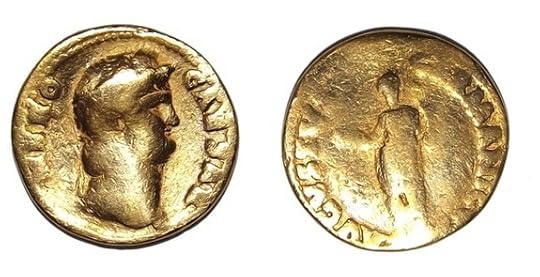
A rare aureus, or gold coin embossed with the image of Emperor Nero was unearthed in a Roman-Era site in England
Credit: © Vindolanda Trust
A rare gold coin from the Roman Empire has been unearthed in England.
Archaeologists found the valuable coin, which is embossed with the image of the hated Emperor Nero and dates to between A.D. 64 and 65, at a site in Northern England. The archaeological site, called Vindolanda, was once a Roman fort near Hadrian's Wall.
"My first find at Vindolanda nearly 20 years ago was a coin, but because of their scarcity, I didn't think for a moment that I would ever see a gold coin unearthed at the site. It was an absolutely magical moment for the whole team," Justin Blake, the deputy director of excavations at the site, said in a statement.
The weighty piece of currency, called an aureus, would have equaled more than half of a soldier's yearly salary at the time.
Rare find
A volunteer, Marcel Albert from France, unearthed the ancient coin in a layer of sediments that dated to the fourth century and that various archaeological teams had thoroughly scoured over several decades. Though the site has yielded thousands of coins over the years, none have been gold.
"I thought it can't be true. It was just sitting there as I scraped back the soil, shining, as if someone had just dropped it," Albert said in the statement.
The fact that the coin is much older than the archaeological layer in which it was found suggests it had been circulating for more than 300 years before it was lost.
Hated figure
Emperor Nero was one of the most controversial figures of the Roman era. He rose to power at the tender age of 16 under his mother's thumb, but went on to murder her and at least one of his wives.
He was also suspected of starting the great fire of Rome and then pinning the blame on Christians. He then executed many of them, burning the religious minority for sources of light in the evenings, setting wild dogs upon them or nailing them to crosses, according to the annals of Roman historian Tacitus.
In order to build an opulent, golden palace in Rome, Nero scrambled for financing, searching for the lost treasure of Queen Dido of Carthage and even looting treasures from Greek and Roman temples, the annals read.
The emperor then issued more gold coins than previous emperors had done, though the coins were noticeably slimmer than in the past.
Emperor Nero was eventually ousted from power in a rebellion in A.D. 68 and committed suicide before he could be executed.
http://www.livescience.com/46420-rare-roman-coin-unearthed.html


A rare aureus, or gold coin embossed with the image of Emperor Nero was unearthed in a Roman-Era site in England
Credit: © Vindolanda Trust
A rare gold coin from the Roman Empire has been unearthed in England.
Archaeologists found the valuable coin, which is embossed with the image of the hated Emperor Nero and dates to between A.D. 64 and 65, at a site in Northern England. The archaeological site, called Vindolanda, was once a Roman fort near Hadrian's Wall.
"My first find at Vindolanda nearly 20 years ago was a coin, but because of their scarcity, I didn't think for a moment that I would ever see a gold coin unearthed at the site. It was an absolutely magical moment for the whole team," Justin Blake, the deputy director of excavations at the site, said in a statement.
The weighty piece of currency, called an aureus, would have equaled more than half of a soldier's yearly salary at the time.
Rare find
A volunteer, Marcel Albert from France, unearthed the ancient coin in a layer of sediments that dated to the fourth century and that various archaeological teams had thoroughly scoured over several decades. Though the site has yielded thousands of coins over the years, none have been gold.
"I thought it can't be true. It was just sitting there as I scraped back the soil, shining, as if someone had just dropped it," Albert said in the statement.
The fact that the coin is much older than the archaeological layer in which it was found suggests it had been circulating for more than 300 years before it was lost.
Hated figure
Emperor Nero was one of the most controversial figures of the Roman era. He rose to power at the tender age of 16 under his mother's thumb, but went on to murder her and at least one of his wives.
He was also suspected of starting the great fire of Rome and then pinning the blame on Christians. He then executed many of them, burning the religious minority for sources of light in the evenings, setting wild dogs upon them or nailing them to crosses, according to the annals of Roman historian Tacitus.
In order to build an opulent, golden palace in Rome, Nero scrambled for financing, searching for the lost treasure of Queen Dido of Carthage and even looting treasures from Greek and Roman temples, the annals read.
The emperor then issued more gold coins than previous emperors had done, though the coins were noticeably slimmer than in the past.
Emperor Nero was eventually ousted from power in a rebellion in A.D. 68 and committed suicide before he could be executed.
http://www.livescience.com/46420-rare-roman-coin-unearthed.html

Published on June 20, 2014 10:37
Remembering Gerry Goffin - Will you Still Love Me Tomorrow?
 Gerry Goffin, Carole King's ex-husband, dies at 75June 19, 2014, 4:42 PM ESTBy MARK KENNEDY , AP Drama WriterNEW YORK (AP) — Lyricist Gerry Goffin, who with his then-wife and songwriting partner Carole King wrote such hits as "Will You Love Me Tomorrow," ''(You Make Me Feel Like) A Natural Woman," ''Halfway to Paradise" and "The Loco-Motion," died Thursday at his home in Los Angeles. He was 75.His wife, Michelle Goffin, confirmed his death.Goffin, who married King in 1959 while they were in their teens, penned more than 50 top 40 hits, including "Pleasant Valley Sunday" for the Monkees, "Crying in the Rain" by the Everly Brothers, "Some Kind of Wonderful" for the Drifters and "Take Good Care of My Baby" by Bobby Vee. The couple divorced in 1968, but Goffin kept writing hits, including "Savin' All My Love for You" for Whitney Houston. http://music.msn.com/music/article.aspx?news=873881&ocid=ansent11
Gerry Goffin, Carole King's ex-husband, dies at 75June 19, 2014, 4:42 PM ESTBy MARK KENNEDY , AP Drama WriterNEW YORK (AP) — Lyricist Gerry Goffin, who with his then-wife and songwriting partner Carole King wrote such hits as "Will You Love Me Tomorrow," ''(You Make Me Feel Like) A Natural Woman," ''Halfway to Paradise" and "The Loco-Motion," died Thursday at his home in Los Angeles. He was 75.His wife, Michelle Goffin, confirmed his death.Goffin, who married King in 1959 while they were in their teens, penned more than 50 top 40 hits, including "Pleasant Valley Sunday" for the Monkees, "Crying in the Rain" by the Everly Brothers, "Some Kind of Wonderful" for the Drifters and "Take Good Care of My Baby" by Bobby Vee. The couple divorced in 1968, but Goffin kept writing hits, including "Savin' All My Love for You" for Whitney Houston. http://music.msn.com/music/article.aspx?news=873881&ocid=ansent11 
Published on June 20, 2014 06:33
History Trivia - Battle of Chalons: Flavius Aetius' defeat Attila the Hun at Catalarinische Fields
June 20

236 BC Scipio Africanus, Roman statesman and general of the Second Punic War was born.

404 the first Cathedral of Santa Sophia in Constantinople was burned to the ground by rioters.

451 Battle of Chalons: Flavius Aetius' defeated Attila the Hun at Catalarinische Fields. Theodorid, King of the Visigoths was mortally wounded in this battle.
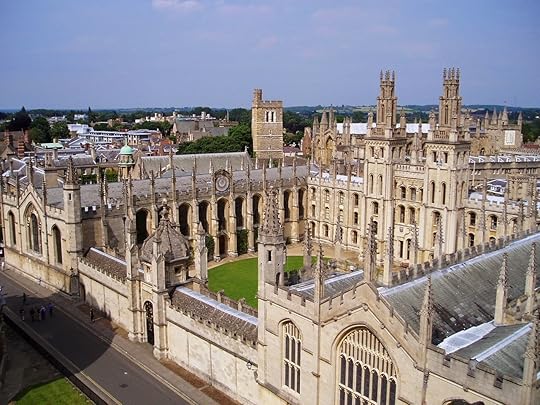
1214 The University of Oxford received its charter.
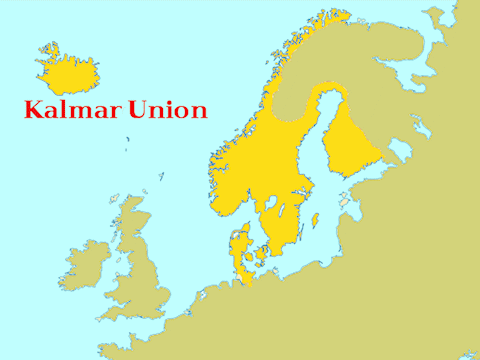
1397 The Union of Kalmar united Denmark, Sweden, and Norway under one monarch.

1685 Monmouth Rebellion: James Scott, 1st Duke of Monmouth declared himself King of England at Bridgwater.


236 BC Scipio Africanus, Roman statesman and general of the Second Punic War was born.

404 the first Cathedral of Santa Sophia in Constantinople was burned to the ground by rioters.

451 Battle of Chalons: Flavius Aetius' defeated Attila the Hun at Catalarinische Fields. Theodorid, King of the Visigoths was mortally wounded in this battle.

1214 The University of Oxford received its charter.

1397 The Union of Kalmar united Denmark, Sweden, and Norway under one monarch.

1685 Monmouth Rebellion: James Scott, 1st Duke of Monmouth declared himself King of England at Bridgwater.

Published on June 20, 2014 04:58
June 19, 2014
History Trivia - Antioch falls to the Crusaders
June 19

1098 Antioch fell to the Crusaders.

1179 The Norwegian Battle of Kalvskinnet outside Nidaros. Earl Erling Skakke was killed, and the battle changed the tide of the civil wars.
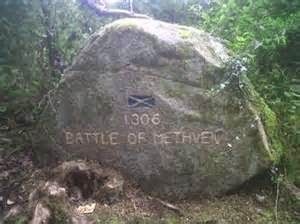
1306 Wars for Scottish Independence: The Earl of Pembroke's army defeated Robert Bruce's Scottish army at the Battle of Methven.

1566 James I Stuart, King of Scotland (James VI)/England) was born.


1098 Antioch fell to the Crusaders.

1179 The Norwegian Battle of Kalvskinnet outside Nidaros. Earl Erling Skakke was killed, and the battle changed the tide of the civil wars.

1306 Wars for Scottish Independence: The Earl of Pembroke's army defeated Robert Bruce's Scottish army at the Battle of Methven.

1566 James I Stuart, King of Scotland (James VI)/England) was born.

Published on June 19, 2014 04:12
June 18, 2014
How to Shrink a Dinosaur: Fossils Reveal Evolution of 'Pocket Sauropods'
By Elizabeth Palermo
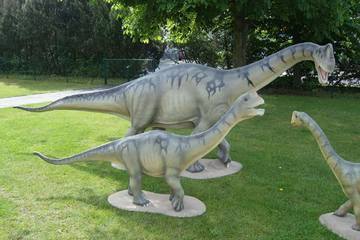
 Newly unveiled models of a group of Europasaurus holgeri dinosaurs at the Dinopark Munchehagen. Copyright and
Newly unveiled models of a group of Europasaurus holgeri dinosaurs at the Dinopark Munchehagen. Copyright and
Credit: Dinopark Münchehagen.
Sauropods are best known for being the largest dinosaurs ever to roam Earth. But a new study of these ancient creatures focuses on a surprising fact: Some sauropods were actually quite small.
The conclusion is based on the discovery of the fossil remains of the smaller-than-average sauropod dubbed Europasaurus holgeri in 2006 in a quarry in northern Germany.The specimens were approximately 20 feet (6 meters) long and are believed to have supported dinosaurs weighing less than a ton each. While these dimensions may seem large by today's standards — the animals were bigger than the average horse — they belonged to animals that were significantly smaller than other sauropods.
Scientists originally thought the fossils may have belonged to juvenile dinosaurs. But the new study determined that the fossils actually belonged to adult dwarf dinosaurs, said lead researcher Martin Sander, a professor of vertebrate paleontology at the Steinmann Institute of Geology, Mineralogy and Paleontology at the University of Bonn in Germany.
The dwarfism exhibited in this rare discovery of sauropod fossils is a result of what's known as island or insular dwarfism. This gradual shrinking of a large species over several generations has also affected other animals — like elephants and hippopotamuses — living in isolated and cramped quarters.
This particular group of sauropods, Europasaurus holgeri, lived about 150 million years ago in what is now Europe. But during the Late Jurassic period, Europe was submerged in a shallow sea, and most of the animals that lived there inhabited small islands. Over time, Europasaurus evolved to better survive in its island habitat by shrinking, the researchers said.
To make their case, the researchers focused on the details of the anatomy of these diminutive dinosaur specimens. They found that, in the case of Europasaurus, two different sizes of dwarf dinosaurs — a small dwarf and a large dwarf — evolved during the Late Jurassic, Sander told Live Science in an email.
"Bone microstructure tells us that the largest of the two kinds of Europasaurus was fully grown," Sander said. "To find this out, we had to grind samples of Europasaurus bones into thin slices, about one-twentieth of a millimeter in thickness."
At this thickness, Sander explained, the bone becomes translucent and can be studied with a microscope, allowing researchers to examine the bones' microstructure. The researchers also examined the shapes of the skull bones to determine each specimen's morphological ontogenetic stage (MOS), or where that animal is over the course of its development.
Sander said both the MOS and the specimen's microstructure help researchers determine how old a dinosaur was when it died.
Once the researchers determined that the specimens they were studying did, indeed, belong to the dwarf dinosaur Europasaurus and not juvenile sauropods, one important question remained: How did Europasaurus get so small?
"To be a dwarf as a dinosaur, your ancestors have to have been giants," Sander said. "In the case of Europasaurus, this is not difficult to check because, with very few exceptions, all of those long-necked sauropods were giants. The question then becomes how to shrink your dinosaur."
Sander said there were two ways dinosaurs could shrink over the course of evolution: Either a dinosaur could stop growing earlier than its ancestor — after five years instead of 20, for instance — or a dinosaur could grow for the same time period (say 20 years), but did so more slowly, at half the speed.
In both cases, a dinosaur would end up being significantly smaller than its ancestor, Sander said. In the case of Europasaurus, both processes seem to have been at work. However, his team was not able to determine which process was dominant.
Another mystery left unresolved by the University of Bonn study is that of the origins of the two different "forms" of Europasaurus — what Sander refers to as "a small dwarf and a large dwarf." These two sizes of Europasaurus could represent an instance of sexual dimorphism, Sander said, in which males and females of the species are formed or sized differently. However, scientists aren't ruling out another possibility: that the fossils from the 2006 discovery represent two distinct Europasaurus species, separated either by time or by distance.
http://www.livescience.com/46384-dwarf-sauropod-dinosaur-evolution.html

 Newly unveiled models of a group of Europasaurus holgeri dinosaurs at the Dinopark Munchehagen. Copyright and
Newly unveiled models of a group of Europasaurus holgeri dinosaurs at the Dinopark Munchehagen. Copyright andCredit: Dinopark Münchehagen.
Sauropods are best known for being the largest dinosaurs ever to roam Earth. But a new study of these ancient creatures focuses on a surprising fact: Some sauropods were actually quite small.
The conclusion is based on the discovery of the fossil remains of the smaller-than-average sauropod dubbed Europasaurus holgeri in 2006 in a quarry in northern Germany.The specimens were approximately 20 feet (6 meters) long and are believed to have supported dinosaurs weighing less than a ton each. While these dimensions may seem large by today's standards — the animals were bigger than the average horse — they belonged to animals that were significantly smaller than other sauropods.
Scientists originally thought the fossils may have belonged to juvenile dinosaurs. But the new study determined that the fossils actually belonged to adult dwarf dinosaurs, said lead researcher Martin Sander, a professor of vertebrate paleontology at the Steinmann Institute of Geology, Mineralogy and Paleontology at the University of Bonn in Germany.
The dwarfism exhibited in this rare discovery of sauropod fossils is a result of what's known as island or insular dwarfism. This gradual shrinking of a large species over several generations has also affected other animals — like elephants and hippopotamuses — living in isolated and cramped quarters.
This particular group of sauropods, Europasaurus holgeri, lived about 150 million years ago in what is now Europe. But during the Late Jurassic period, Europe was submerged in a shallow sea, and most of the animals that lived there inhabited small islands. Over time, Europasaurus evolved to better survive in its island habitat by shrinking, the researchers said.
To make their case, the researchers focused on the details of the anatomy of these diminutive dinosaur specimens. They found that, in the case of Europasaurus, two different sizes of dwarf dinosaurs — a small dwarf and a large dwarf — evolved during the Late Jurassic, Sander told Live Science in an email.
"Bone microstructure tells us that the largest of the two kinds of Europasaurus was fully grown," Sander said. "To find this out, we had to grind samples of Europasaurus bones into thin slices, about one-twentieth of a millimeter in thickness."
At this thickness, Sander explained, the bone becomes translucent and can be studied with a microscope, allowing researchers to examine the bones' microstructure. The researchers also examined the shapes of the skull bones to determine each specimen's morphological ontogenetic stage (MOS), or where that animal is over the course of its development.
Sander said both the MOS and the specimen's microstructure help researchers determine how old a dinosaur was when it died.
Once the researchers determined that the specimens they were studying did, indeed, belong to the dwarf dinosaur Europasaurus and not juvenile sauropods, one important question remained: How did Europasaurus get so small?
"To be a dwarf as a dinosaur, your ancestors have to have been giants," Sander said. "In the case of Europasaurus, this is not difficult to check because, with very few exceptions, all of those long-necked sauropods were giants. The question then becomes how to shrink your dinosaur."
Sander said there were two ways dinosaurs could shrink over the course of evolution: Either a dinosaur could stop growing earlier than its ancestor — after five years instead of 20, for instance — or a dinosaur could grow for the same time period (say 20 years), but did so more slowly, at half the speed.
In both cases, a dinosaur would end up being significantly smaller than its ancestor, Sander said. In the case of Europasaurus, both processes seem to have been at work. However, his team was not able to determine which process was dominant.
Another mystery left unresolved by the University of Bonn study is that of the origins of the two different "forms" of Europasaurus — what Sander refers to as "a small dwarf and a large dwarf." These two sizes of Europasaurus could represent an instance of sexual dimorphism, Sander said, in which males and females of the species are formed or sized differently. However, scientists aren't ruling out another possibility: that the fossils from the 2006 discovery represent two distinct Europasaurus species, separated either by time or by distance.
http://www.livescience.com/46384-dwarf-sauropod-dinosaur-evolution.html

Published on June 18, 2014 15:20
Skull Model Shows Artistry, But Is It a Leonardo da Vinci?
By Megan Gannon
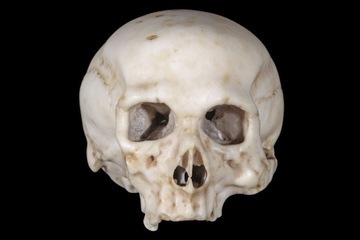
A researcher thinks this skull model is crafted from an agate-based mixture, or "mistioni," that Leonardo da Vinci was experimenting with in the early 16th century.
Credit: Dr K Beckeer
A miniature skull model that a German couple bought in an antique shop three decades ago could be a 500-year-old lost work of art created by the original Renaissance man, Leonardo da Vinci, a new study claims. But some art historians are wary of the attribution.
About one-third the size of an adult human skull, the handcrafted cranium is missing a lower jaw and a cheekbone, but otherwise, the milky-white model is remarkable for its anatomical detail.
"It's like looking at a car: If you open the hood of a car, you see the quality of the car," Stefaan Missinne, an independent Belgian researcher based in Vienna, told Live Science. Missinne thinks the skull has that kind of under-the-hood quality, clearly made by someone with an intimate knowledge of anatomy.
Leonardo learned anatomy, sometimes by dissection, as a way to improve his drawings and paintings of the human form. But he didn't always get everything right. The great Italian artist clung to some medieval ideas about how the body worked, and Missinne thinks the skull and some of Leonardo's 15th-century anatomical drawings share the same errors, from the skewed sutures to the eye sockets that lead inside the cranium, like windows to the soul.
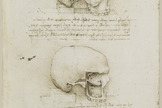
[image error] Leonardo da Vinci made anatomical drawings of the human skull in 1489. These sketches, acquired by English King Charles II, are now housed in Britain's Royal Collection in Windsor.
Leonardo da Vinci made anatomical drawings of the human skull in 1489. These sketches, acquired by English King Charles II, are now housed in Britain's Royal Collection in Windsor.
Credit: Royal Collection Trust/© Her Majesty Queen Elizabeth II 2014
View full size imageMissinne also argues that the skull shares characteristics with the old men in Leonardo's so-called grotesque drawings, with its bulging forehead and hooked nose. Missing one tooth, the skull has an overall "scurrilous impression," Missinne wrote, perhaps intended to capture the ugliness of old age.
"It may well be that Leonardo, who was known to be melancholic, and seems, as early as 1500, to have been troubled as he got older by the loss of eyesight, as he writes he needs 'occhiali,' meaning glasses and by sorrow, used this miniature skull in his late years as his personal sorrow stone," Missinne wrote in his article published last month in the academic journal Wiener Medizinische Wochenzeitschrift.
Too good to be true?
It makes for a good story, but art historians contacted by Live Science were skeptical of the claims.
Missinne admits in his paper that some of the evidence he presents "may be interpreted as circumstantial." He dated the skull to around 1508, arguing that the presence of iridium in the skull model (revealed through a chemical analysis) suggests that it's not carved from a single stone like alabaster, but rather crafted from an agate-based mixture, or "mistioni," which Leonardo was experimenting with during this time. Missinne also found a mention of a detailed skull in the inventory of Salai, Leonardo's pupil. [Leonardo Da Vinci's 10 Best Ideas]
Michael Kwakkelstein, of the Dutch University Institute for Art History, said he examined the skull in the late 1990s after the owners approached him.
"Although I was impressed by the detailed rendering and anatomical knowledge this miniature skull displays, the problem remains that we cannot compare it to any authentic Leonardo sculpture for the simple reason that none of his works in sculpture have survived," Kwakkelstein wrote in an email.
Leonardo expert Martin Kemp, professor emeritus of the history of art at Oxford University, also said he became aware of this skull and the attempt to attribute it to Leonardo several years ago.
"I was not convinced then, and am even less convinced now," Kemp told Live Science in an email. He said he didn't believe Leonardo would have tried to make an anatomical model intentionally grotesque.

[image error] Renaissance biographer Giorgio Vasari wrote that Leonardo da Vinci was "so delighted when he saw curious heads, whether bearded or hairy, that he would follow anyone who had thus attracted his attention for a whole day, acquiring such a clear idea of him that when he went home he would draw the head as well as if the man had been present." Leonardo drew this caricature around 1495.
Credit: The J. Paul Getty Museum, 84.GA.647
View full size image"Whatever resemblances there are between the skull and Leonardo's drawings of skulls and sectioned skulls from 1489, these are overridden by the absence of the right zygomatic arch [cheek bone] and other asymmetrical deformations," Kemp said. "In his anatomical demonstrations, Leonardo specifically tries to avoid what he called 'monstrous' images."
Missinne argues that Leonardo wanted to know and learn why certain people had monstrous faces.
"Leonardo's interest in human nature, anatomy and any kind of freaky deformation, including facial ones is recorded and proven," Missinne told Live Science.
In the rare instances when works by Leonardo go on sale, they fetch exorbitant prices. In May 2013, Sotheby's brokered a deal to sell a recently attributed Leonardo painting of Christ known as "Salvator Mundi" for between $75 million and $80 million. In general, authentic Leonardo discoveries are uncommon — and often plagued by controversy — though apparently there is no shortage of claims.
"'New discoveries' of works by Leonardo are almost a weekly occurrence: they clutter my email box," one curator, who declined to comment on the paper, wrote in an email.
http://www.livescience.com/46351-skull-model-leonardo-da-vinci.html


A researcher thinks this skull model is crafted from an agate-based mixture, or "mistioni," that Leonardo da Vinci was experimenting with in the early 16th century.
Credit: Dr K Beckeer
A miniature skull model that a German couple bought in an antique shop three decades ago could be a 500-year-old lost work of art created by the original Renaissance man, Leonardo da Vinci, a new study claims. But some art historians are wary of the attribution.
About one-third the size of an adult human skull, the handcrafted cranium is missing a lower jaw and a cheekbone, but otherwise, the milky-white model is remarkable for its anatomical detail.
"It's like looking at a car: If you open the hood of a car, you see the quality of the car," Stefaan Missinne, an independent Belgian researcher based in Vienna, told Live Science. Missinne thinks the skull has that kind of under-the-hood quality, clearly made by someone with an intimate knowledge of anatomy.
Leonardo learned anatomy, sometimes by dissection, as a way to improve his drawings and paintings of the human form. But he didn't always get everything right. The great Italian artist clung to some medieval ideas about how the body worked, and Missinne thinks the skull and some of Leonardo's 15th-century anatomical drawings share the same errors, from the skewed sutures to the eye sockets that lead inside the cranium, like windows to the soul.

[image error]
 Leonardo da Vinci made anatomical drawings of the human skull in 1489. These sketches, acquired by English King Charles II, are now housed in Britain's Royal Collection in Windsor.
Leonardo da Vinci made anatomical drawings of the human skull in 1489. These sketches, acquired by English King Charles II, are now housed in Britain's Royal Collection in Windsor.Credit: Royal Collection Trust/© Her Majesty Queen Elizabeth II 2014
View full size imageMissinne also argues that the skull shares characteristics with the old men in Leonardo's so-called grotesque drawings, with its bulging forehead and hooked nose. Missing one tooth, the skull has an overall "scurrilous impression," Missinne wrote, perhaps intended to capture the ugliness of old age.
"It may well be that Leonardo, who was known to be melancholic, and seems, as early as 1500, to have been troubled as he got older by the loss of eyesight, as he writes he needs 'occhiali,' meaning glasses and by sorrow, used this miniature skull in his late years as his personal sorrow stone," Missinne wrote in his article published last month in the academic journal Wiener Medizinische Wochenzeitschrift.
Too good to be true?
It makes for a good story, but art historians contacted by Live Science were skeptical of the claims.
Missinne admits in his paper that some of the evidence he presents "may be interpreted as circumstantial." He dated the skull to around 1508, arguing that the presence of iridium in the skull model (revealed through a chemical analysis) suggests that it's not carved from a single stone like alabaster, but rather crafted from an agate-based mixture, or "mistioni," which Leonardo was experimenting with during this time. Missinne also found a mention of a detailed skull in the inventory of Salai, Leonardo's pupil. [Leonardo Da Vinci's 10 Best Ideas]
Michael Kwakkelstein, of the Dutch University Institute for Art History, said he examined the skull in the late 1990s after the owners approached him.
"Although I was impressed by the detailed rendering and anatomical knowledge this miniature skull displays, the problem remains that we cannot compare it to any authentic Leonardo sculpture for the simple reason that none of his works in sculpture have survived," Kwakkelstein wrote in an email.
Leonardo expert Martin Kemp, professor emeritus of the history of art at Oxford University, also said he became aware of this skull and the attempt to attribute it to Leonardo several years ago.
"I was not convinced then, and am even less convinced now," Kemp told Live Science in an email. He said he didn't believe Leonardo would have tried to make an anatomical model intentionally grotesque.

[image error] Renaissance biographer Giorgio Vasari wrote that Leonardo da Vinci was "so delighted when he saw curious heads, whether bearded or hairy, that he would follow anyone who had thus attracted his attention for a whole day, acquiring such a clear idea of him that when he went home he would draw the head as well as if the man had been present." Leonardo drew this caricature around 1495.
Credit: The J. Paul Getty Museum, 84.GA.647
View full size image"Whatever resemblances there are between the skull and Leonardo's drawings of skulls and sectioned skulls from 1489, these are overridden by the absence of the right zygomatic arch [cheek bone] and other asymmetrical deformations," Kemp said. "In his anatomical demonstrations, Leonardo specifically tries to avoid what he called 'monstrous' images."
Missinne argues that Leonardo wanted to know and learn why certain people had monstrous faces.
"Leonardo's interest in human nature, anatomy and any kind of freaky deformation, including facial ones is recorded and proven," Missinne told Live Science.
In the rare instances when works by Leonardo go on sale, they fetch exorbitant prices. In May 2013, Sotheby's brokered a deal to sell a recently attributed Leonardo painting of Christ known as "Salvator Mundi" for between $75 million and $80 million. In general, authentic Leonardo discoveries are uncommon — and often plagued by controversy — though apparently there is no shortage of claims.
"'New discoveries' of works by Leonardo are almost a weekly occurrence: they clutter my email box," one curator, who declined to comment on the paper, wrote in an email.
http://www.livescience.com/46351-skull-model-leonardo-da-vinci.html

Published on June 18, 2014 15:14
King Richard III's Tomb Design Unveiled
By Stephanie Pappas
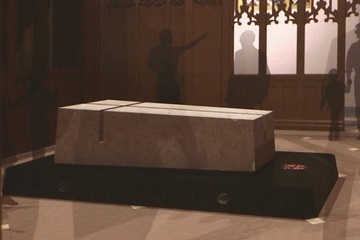 King Richard III's stone tomb will sit on a slab of dark Kilkenny marble, which will be inscribed with the king's name, dates, motto and coat of arms.
King Richard III's stone tomb will sit on a slab of dark Kilkenny marble, which will be inscribed with the king's name, dates, motto and coat of arms.
Credit: Video Screengrab, Diocese of Leicester
King Richard III of England will be laid back to rest in a wooden coffin sealed inside a tomb made of Swaledale fossil stone in Leicester Cathedral, the dean of the cathedral announced Monday (June 16).
Michael Ibsen, a descendant to King Richard III's sister Anne of York, will make the king's coffin.
The announcement comes on the heels of a judicial verdict that concluded the University of Leicester has the legal right to reinter Richard III's bones. The king ruled England from 1483 until his death at the Bottle of Bosworth Field in 1485. His body was taken to Leicester from the battlefield and buried in a hastily dug grave.
In 2012, a dig led by the University of Leicester rediscovered this grave under a city council parking lot. Because the university had the excavation permit for the dig, it was the university's responsibility to rebury the remains after study. The plan, according to university and city officials, has always been to rebury Richard in the city's cathedral.
However, independent groups of Richard enthusiasts contested this decision, arguing that the university should have to take other opinions into account. In particular, a group of indirect descendants known as the Plantagenet Alliance advocated to have Richard III reburied in York, England, instead. [Gallery: The Search for Richard III in Photos]
Burial plans
The Plantagenet Alliance and its supporters argued that Richard III had adopted York as his hometown in life (he spent about a third of his 33 years in the city). Leicester, the scene of his ignominious burial in 1485, would not be the king's choice of resting place, the group argued.
However, a British High Court ruled on May 23 that the University of Leicester had a valid exhumation license, and thus could reinter Richard's remains.
Today, the Very Reverend David Monteith of the Leicester Cathedral announced the final plans for Richard's tomb, which, he said, will combine three elements: It will be distinctive and elegant; it will evoke memory and be deeply respectful of history; and it will be deeply imbued in spirituality.
The design also points to Christianity, which would've been a fundamental belief of King Richard's, noted the Reverend Canon Mandy Ford of Leicester Cathedral. For instance, a deep cut in the stone — which will include embedded fossils — in the shape of a cross will let light flood through it, "symbolizing that for Christians death is not the end but that we all receive new life in Christ," Ford said during the unveiling. [Images: New Dig at Richard III's Rediscovered Grave]
The stone tomb will also be tilted slightly "as if rising to meet the risen Jesus," Ford said.
The design is different in some respects from burial plans unveiled in September 2013, which showed a modernistic stone tomb with a simple cross design. Rather, the remains will be laid to rest inside a lead ossuary placed inside a coffin made of English oak. The entire coffin will then be placed into a brick-lined vault in the floor of the cathedral and sealed off with the stone tomb. That tomb, rather than resting over a large white rose — the heraldic symbol of the House of York — will sit on a slab of dark Kilkenny marble, Ford said, which will be inscribed with the king's name, dates, motto and coat of arms.
The Richard III Society noted displeasure with that last tomb feature: "Some of our members will have reservations about the design, and whilst we understand the rationale behind the tomb's design its starkness will not appeal to all. There is a particular need for clearly identifiable white roses within its design," the society noted in a statement.
"We hope that some of the issues we have with the latest tomb design can be resolved amicably, and a meeting with the cathedral authorities to discuss these matters is scheduled," the society added in the statement.
The cost of the tomb and interment is estimated at 2.5 million pounds ($4.2 million), according to Monteith.
King and controversy
Richard III's reburial is not the only focus on controversy surrounding the king. The University of Leicester has taken samples of DNA from the king's bones, and researchers plan to sequence Richard's entire genome. That plan has raised criticism from some, including independent historian John Ashdown-Hill.
"We're talking about a member of the royal family and a former head of state," Ashdown-Hill told Live Science in February. No other former head of state would be subject to such study, he said.
Of course, Richard III wouldn't be Richard III without controversy. The king's fame is largely due to a Shakespeare play written about him more than a century after his death. The play painted Richard as a twisted, evil villain — but the portrayal was more likely a sign of the times than based in reality. When Shakespeare wrote "Richard III," Queen Elizabeth I ruled England. Elizabeth I was the granddaughter of Henry VII, the first Tudor monarch, and the man whose forces defeated Richard III at the Battle of Bosworth Field.
The king's remains are expected to be reburied in the spring of 2015.
http://www.livescience.com/46376-king-richard-iii-tomb-unveiled.html

 King Richard III's stone tomb will sit on a slab of dark Kilkenny marble, which will be inscribed with the king's name, dates, motto and coat of arms.
King Richard III's stone tomb will sit on a slab of dark Kilkenny marble, which will be inscribed with the king's name, dates, motto and coat of arms.Credit: Video Screengrab, Diocese of Leicester
King Richard III of England will be laid back to rest in a wooden coffin sealed inside a tomb made of Swaledale fossil stone in Leicester Cathedral, the dean of the cathedral announced Monday (June 16).
Michael Ibsen, a descendant to King Richard III's sister Anne of York, will make the king's coffin.
The announcement comes on the heels of a judicial verdict that concluded the University of Leicester has the legal right to reinter Richard III's bones. The king ruled England from 1483 until his death at the Bottle of Bosworth Field in 1485. His body was taken to Leicester from the battlefield and buried in a hastily dug grave.
In 2012, a dig led by the University of Leicester rediscovered this grave under a city council parking lot. Because the university had the excavation permit for the dig, it was the university's responsibility to rebury the remains after study. The plan, according to university and city officials, has always been to rebury Richard in the city's cathedral.
However, independent groups of Richard enthusiasts contested this decision, arguing that the university should have to take other opinions into account. In particular, a group of indirect descendants known as the Plantagenet Alliance advocated to have Richard III reburied in York, England, instead. [Gallery: The Search for Richard III in Photos]
Burial plans
The Plantagenet Alliance and its supporters argued that Richard III had adopted York as his hometown in life (he spent about a third of his 33 years in the city). Leicester, the scene of his ignominious burial in 1485, would not be the king's choice of resting place, the group argued.
However, a British High Court ruled on May 23 that the University of Leicester had a valid exhumation license, and thus could reinter Richard's remains.
Today, the Very Reverend David Monteith of the Leicester Cathedral announced the final plans for Richard's tomb, which, he said, will combine three elements: It will be distinctive and elegant; it will evoke memory and be deeply respectful of history; and it will be deeply imbued in spirituality.
The design also points to Christianity, which would've been a fundamental belief of King Richard's, noted the Reverend Canon Mandy Ford of Leicester Cathedral. For instance, a deep cut in the stone — which will include embedded fossils — in the shape of a cross will let light flood through it, "symbolizing that for Christians death is not the end but that we all receive new life in Christ," Ford said during the unveiling. [Images: New Dig at Richard III's Rediscovered Grave]
The stone tomb will also be tilted slightly "as if rising to meet the risen Jesus," Ford said.
The design is different in some respects from burial plans unveiled in September 2013, which showed a modernistic stone tomb with a simple cross design. Rather, the remains will be laid to rest inside a lead ossuary placed inside a coffin made of English oak. The entire coffin will then be placed into a brick-lined vault in the floor of the cathedral and sealed off with the stone tomb. That tomb, rather than resting over a large white rose — the heraldic symbol of the House of York — will sit on a slab of dark Kilkenny marble, Ford said, which will be inscribed with the king's name, dates, motto and coat of arms.
The Richard III Society noted displeasure with that last tomb feature: "Some of our members will have reservations about the design, and whilst we understand the rationale behind the tomb's design its starkness will not appeal to all. There is a particular need for clearly identifiable white roses within its design," the society noted in a statement.
"We hope that some of the issues we have with the latest tomb design can be resolved amicably, and a meeting with the cathedral authorities to discuss these matters is scheduled," the society added in the statement.
The cost of the tomb and interment is estimated at 2.5 million pounds ($4.2 million), according to Monteith.
King and controversy
Richard III's reburial is not the only focus on controversy surrounding the king. The University of Leicester has taken samples of DNA from the king's bones, and researchers plan to sequence Richard's entire genome. That plan has raised criticism from some, including independent historian John Ashdown-Hill.
"We're talking about a member of the royal family and a former head of state," Ashdown-Hill told Live Science in February. No other former head of state would be subject to such study, he said.
Of course, Richard III wouldn't be Richard III without controversy. The king's fame is largely due to a Shakespeare play written about him more than a century after his death. The play painted Richard as a twisted, evil villain — but the portrayal was more likely a sign of the times than based in reality. When Shakespeare wrote "Richard III," Queen Elizabeth I ruled England. Elizabeth I was the granddaughter of Henry VII, the first Tudor monarch, and the man whose forces defeated Richard III at the Battle of Bosworth Field.
The king's remains are expected to be reburied in the spring of 2015.
http://www.livescience.com/46376-king-richard-iii-tomb-unveiled.html

Published on June 18, 2014 15:06
Deep-Diving 'Exosuit' Lets Scientists Explore 2,000-Year-Old Shipwreck
By Kelly Dickerson
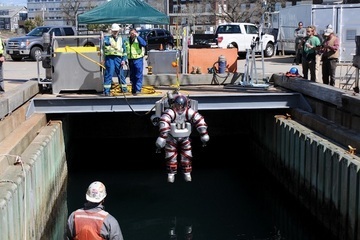
 Operators can quickly haul the Exosuit up from hundreds of feet below the surface without the risk of decompression sickness.
Operators can quickly haul the Exosuit up from hundreds of feet below the surface without the risk of decompression sickness.
Credit: Courtesy of Brendan Foley
A treasure trove of bronze and marble statues, gold jewelry and ancient scientific instruments may be buried in sand, hundreds of feet below the Aegean Sea, and a team of explorers is going after the 2,000-year-old hoard using the most advanced diving suit ever built.
Later this year, scientists and divers plan to explore the so-called Antikythera shipwreck, which settled on the seafloor around 50 B.C. off the coast of Antikythera, a Greek island. The team's secret weapon is a 6.5-foot-tall (2 meters), 530-pound (240 kilograms) metal diving suit equipped with 1.6-horsepower thrusters that can reach the extreme depths where the ship came to rest.
The so-called Exosuit's maiden mission will take place in July, when scientists will use the suit to observe and collect bioluminescent organisms off the coast of Rhode Island. If all goes well, the suit will be brought to Greece in September
Brendan Foley, a maritime archaeologist at the Woods Hole Oceanographic Institute in Massachusetts and co-director of the Antikythera mission, thinks the ship's entire main cargo hold is buried under layers of sand. Previous explorations have only scratched the surface of what the shipwreck might hold, but the Exosuit will make an extensive exploration possible, and the mission could unearth some incredible artifacts.
"It's likely that sediment will hold the kind of stuff we can't even imagine," Foley told Live Science. "Our eyes light up thinking about it. It's the kind of thing that wakes you up in the middle of the night. These are artifacts that have never been seen since the time of Caesar."
History of the wreck
The ancient shipwreck remained hidden until 1900, when Greek sponge divers first spotted it off the coast of Antikythera. Among statues, gold jewelry and other luxury goods, the sponge divers pulled the world's oldest known computer from the wreckage. Scientists believe the device, called the Antikythera mechanism, functioned as an analog computer that could predict eclipses, phases of the moon and other astronomical events
from the wreckage. Scientists believe the device, called the Antikythera mechanism, functioned as an analog computer that could predict eclipses, phases of the moon and other astronomical events . It predates all other computing devices by almost 1,000 years.
. It predates all other computing devices by almost 1,000 years.
Aside from a brief mission in 1976 led by Jacques Cousteau, the shipwreck has remained undisturbed until now.
The wreck spans an estimated area about 130 feet (40 m) long and 33 feet (10 m) wide, located precariously just west of a steep vertical drop. The first exploration in 1900 almost sent the whole ship tumbling over the edge, said Foley, and some artifacts might have slipped down the trench over time. The team will use the Exosuit, made by the Vancouver-based company Nuytco Research, and other high-tech diving equipment to reach the bottom of the trench, which could be around 400 feet (120 m) deep.
Preparing for the excavation
Before they start unearthing treasures, the team will map the wreck as precisely as possible. An underwater robot with two cameras mounted side by side will roam the murky bottom for a few days and map the wreck in 3D. [The 7 Most Extreme Jobs in Science]
"This is the most important part of the project, actually," Foley said. Without a detailed map of the wreckage, the team risks disturbing delicate artifacts.
Once they have a visual of the area, divers in regular SCUBA gear will plunge down to the wreck with handheld metal detectors and a bag of tiny plastic flags. This part of the mission, Foley said, "is not so high tech." The divers will sweep the wreck site, and every time they get a hit on their metal detector, they'll plant a flag in the sediment. Then, they'll send the robot back to map the flags.
"All we really want to know is roughly where things are, where concentrations of things are, then we can start the excavation," Foley said.
The first diving excavators will be equipped with a closed-circuit rebreathing system that absorbs the carbon dioxide from each exhaled breath and allows the user to breath in the unused oxygen from each breath. The rebreathers will give the divers at least 30 minutes of bottom time. Then the team will bring out the big guns — the Exosuit that allows for virtually unlimited bottom time.
Reaching the bottom
Pieces of the Antikythera shipwreck could be hidden at depths of 400 feet (120 m). The sponge divers in 1900 could only reach depths of about 150 feet (50 m) and could only stay below the water's surface for a few minutes at a time. In contrast, a diver in the Exosuit can safely reach up to 1,000 feet (300 m) and can potentially stay submerged for up to 50 hours; a cable connecting the suit to the surface cycles out carbon dioxide and filters in new oxygen.
The suit also protects against decompression sickness, or "the bends." Divers, and even some sea creatures, get the bends when they swim to the surface too quickly and the rapid change in water pressure creates nitrogen bubbles in the blood. Divers using the rebreathers can only spend 30 minutes below, because it takes them about an hour and a half to resurface to ensure their bodies have time to adjust to the pressure change.
Here, the Exosuit again has an advantage. Operators on the ship can haul the user up to the surface in just two or three minutes since the wearer will not feel any pressure change in the metal suit.
The high-tech suit also offers advantages over remotely operated vehicles (ROVs). Unmanned ROVs commonly used to explore shipwrecks can't collect the delicate corroded artifacts that a diver can, and the Exosuit is equipped with claws for hands that will allow the wearer to sift through sediment and grasp any unearthed treasures.
"If we find what we think we're going to find, we're expecting this to turn into a five-year project," Foley said.
http://www.livescience.com/46341-diving-mission-explores-antikythera.html

 Operators can quickly haul the Exosuit up from hundreds of feet below the surface without the risk of decompression sickness.
Operators can quickly haul the Exosuit up from hundreds of feet below the surface without the risk of decompression sickness.Credit: Courtesy of Brendan Foley
A treasure trove of bronze and marble statues, gold jewelry and ancient scientific instruments may be buried in sand, hundreds of feet below the Aegean Sea, and a team of explorers is going after the 2,000-year-old hoard using the most advanced diving suit ever built.
Later this year, scientists and divers plan to explore the so-called Antikythera shipwreck, which settled on the seafloor around 50 B.C. off the coast of Antikythera, a Greek island. The team's secret weapon is a 6.5-foot-tall (2 meters), 530-pound (240 kilograms) metal diving suit equipped with 1.6-horsepower thrusters that can reach the extreme depths where the ship came to rest.
The so-called Exosuit's maiden mission will take place in July, when scientists will use the suit to observe and collect bioluminescent organisms off the coast of Rhode Island. If all goes well, the suit will be brought to Greece in September
Brendan Foley, a maritime archaeologist at the Woods Hole Oceanographic Institute in Massachusetts and co-director of the Antikythera mission, thinks the ship's entire main cargo hold is buried under layers of sand. Previous explorations have only scratched the surface of what the shipwreck might hold, but the Exosuit will make an extensive exploration possible, and the mission could unearth some incredible artifacts.
"It's likely that sediment will hold the kind of stuff we can't even imagine," Foley told Live Science. "Our eyes light up thinking about it. It's the kind of thing that wakes you up in the middle of the night. These are artifacts that have never been seen since the time of Caesar."
History of the wreck
The ancient shipwreck remained hidden until 1900, when Greek sponge divers first spotted it off the coast of Antikythera. Among statues, gold jewelry and other luxury goods, the sponge divers pulled the world's oldest known computer
 from the wreckage. Scientists believe the device, called the Antikythera mechanism, functioned as an analog computer that could predict eclipses, phases of the moon and other astronomical events
from the wreckage. Scientists believe the device, called the Antikythera mechanism, functioned as an analog computer that could predict eclipses, phases of the moon and other astronomical events . It predates all other computing devices by almost 1,000 years.
. It predates all other computing devices by almost 1,000 years.Aside from a brief mission in 1976 led by Jacques Cousteau, the shipwreck has remained undisturbed until now.
The wreck spans an estimated area about 130 feet (40 m) long and 33 feet (10 m) wide, located precariously just west of a steep vertical drop. The first exploration in 1900 almost sent the whole ship tumbling over the edge, said Foley, and some artifacts might have slipped down the trench over time. The team will use the Exosuit, made by the Vancouver-based company Nuytco Research, and other high-tech diving equipment to reach the bottom of the trench, which could be around 400 feet (120 m) deep.
Preparing for the excavation
Before they start unearthing treasures, the team will map the wreck as precisely as possible. An underwater robot with two cameras mounted side by side will roam the murky bottom for a few days and map the wreck in 3D. [The 7 Most Extreme Jobs in Science]
"This is the most important part of the project, actually," Foley said. Without a detailed map of the wreckage, the team risks disturbing delicate artifacts.
Once they have a visual of the area, divers in regular SCUBA gear will plunge down to the wreck with handheld metal detectors and a bag of tiny plastic flags. This part of the mission, Foley said, "is not so high tech." The divers will sweep the wreck site, and every time they get a hit on their metal detector, they'll plant a flag in the sediment. Then, they'll send the robot back to map the flags.
"All we really want to know is roughly where things are, where concentrations of things are, then we can start the excavation," Foley said.
The first diving excavators will be equipped with a closed-circuit rebreathing system that absorbs the carbon dioxide from each exhaled breath and allows the user to breath in the unused oxygen from each breath. The rebreathers will give the divers at least 30 minutes of bottom time. Then the team will bring out the big guns — the Exosuit that allows for virtually unlimited bottom time.
Reaching the bottom
Pieces of the Antikythera shipwreck could be hidden at depths of 400 feet (120 m). The sponge divers in 1900 could only reach depths of about 150 feet (50 m) and could only stay below the water's surface for a few minutes at a time. In contrast, a diver in the Exosuit can safely reach up to 1,000 feet (300 m) and can potentially stay submerged for up to 50 hours; a cable connecting the suit to the surface cycles out carbon dioxide and filters in new oxygen.
The suit also protects against decompression sickness, or "the bends." Divers, and even some sea creatures, get the bends when they swim to the surface too quickly and the rapid change in water pressure creates nitrogen bubbles in the blood. Divers using the rebreathers can only spend 30 minutes below, because it takes them about an hour and a half to resurface to ensure their bodies have time to adjust to the pressure change.
Here, the Exosuit again has an advantage. Operators on the ship can haul the user up to the surface in just two or three minutes since the wearer will not feel any pressure change in the metal suit.
The high-tech suit also offers advantages over remotely operated vehicles (ROVs). Unmanned ROVs commonly used to explore shipwrecks can't collect the delicate corroded artifacts that a diver can, and the Exosuit is equipped with claws for hands that will allow the wearer to sift through sediment and grasp any unearthed treasures.
"If we find what we think we're going to find, we're expecting this to turn into a five-year project," Foley said.
http://www.livescience.com/46341-diving-mission-explores-antikythera.html

Published on June 18, 2014 15:00
History Trivia - Swedish Vikings attack Constantinople
June 18
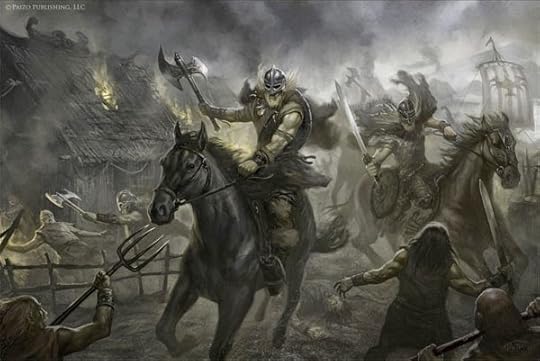
860 Swedish Vikings attacked Constantinople.

1053 Pope Leo IX was taken prisoner by the Normans.
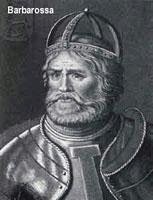
1155 German King Frederick Barbarossa was crowned Holy Roman Emperor.
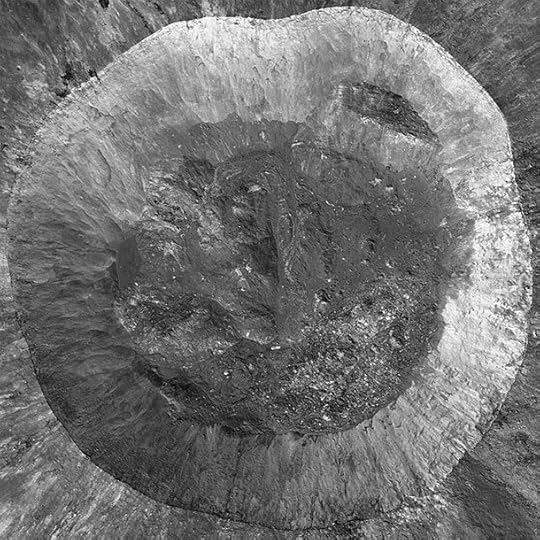
1178 Proposed time of origin of the lunar crater Giordano Bruno - five Canterbury monks reported an explosion on the moon (only known observation).
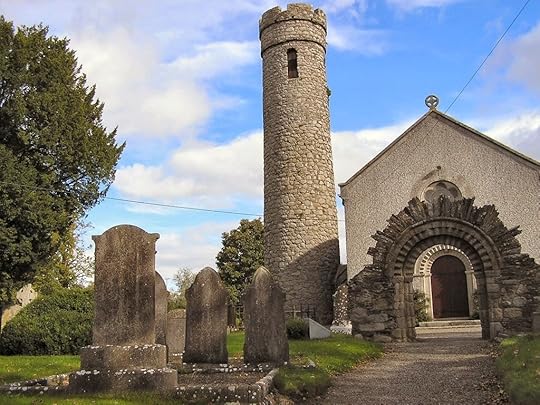
1264 The Parliament of Ireland met at Castledermot in County Kildare, the first definitively known meeting of this Irish legislature.


860 Swedish Vikings attacked Constantinople.

1053 Pope Leo IX was taken prisoner by the Normans.

1155 German King Frederick Barbarossa was crowned Holy Roman Emperor.

1178 Proposed time of origin of the lunar crater Giordano Bruno - five Canterbury monks reported an explosion on the moon (only known observation).

1264 The Parliament of Ireland met at Castledermot in County Kildare, the first definitively known meeting of this Irish legislature.

Published on June 18, 2014 05:25



